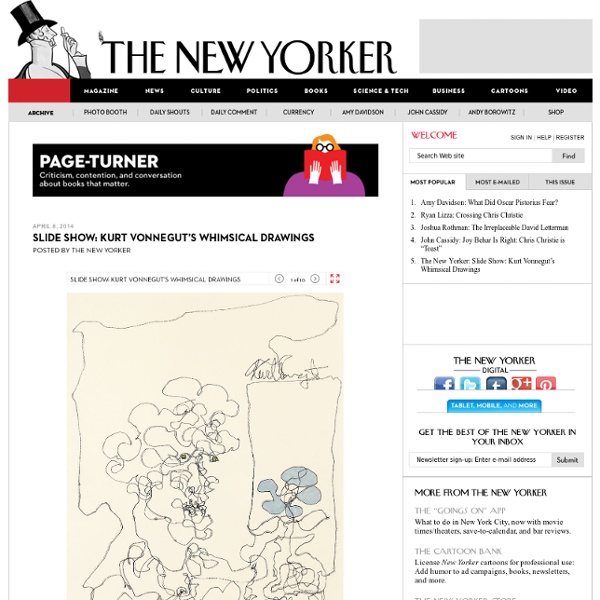Notizie di libri Corriere della Sera
Israele, in poco più di una settimana il libro ha venduto alcune migliaia di copie CULTURAUn successo editoriale sugli insediamenti. Assaf Gavron: slang e humour per sfidare i tre maestri Oz, Grossman e Yehoshua di Viviana Mazza Se il vivaista diventa Kafka CULTURADalla radio al romanzo, Marco Presta è fatto così: butta giù pennellate dense di ironia per descrivere il disagio e il degrado della nostra società di A.Arachi La fenomenologia della mitezza CULTURABarbara Spinelli esplora il mondo di coloro che «erediteranno la terra». Il Paese Italia senza un de Gaulle CULTURARitorna per Rubbettino la biografia (rivista) del generale di Gaetano Quagliariello. L'Europa, Pilato e il populismo CULTURAI fini della natura e della ragione a confronto con la fede nel pensiero del filosofo Robert Spaemann e del cardinale Ruini di G.G.Vecchi Il ritorno di Robert Musil
Literary Kicks
The Art of Manliness
The Valve - A Literary Organ
Depression Part Two
I remember being endlessly entertained by the adventures of my toys. Some days they died repeated, violent deaths, other days they traveled to space or discussed my swim lessons and how I absolutely should be allowed in the deep end of the pool, especially since I was such a talented doggy-paddler. I didn't understand why it was fun for me, it just was. But as I grew older, it became harder and harder to access that expansive imaginary space that made my toys fun. I played out all the same story lines that had been fun before, but the meaning had disappeared. Depression feels almost exactly like that, except about everything. At first, though, the invulnerability that accompanied the detachment was exhilarating. The beginning of my depression had been nothing but feelings, so the emotional deadening that followed was a welcome relief. Which leads to horrible, soul-decaying boredom. Months oozed by, and I gradually came to accept that maybe enjoyment was not a thing I got to feel anymore.
The Reading Experience 2.0
Free ebooks - Project Gutenberg
ReadySteadyBlog « ReadySteadyBook - a literary site
In Simone Weil: An Introduction to her Thought, John Hellman shows that Weil's concept of attention is not simply some kind of effortful application of concentration (Weil: "Most often attention is confused with a kind of muscular effort ... [a] kind of frowning application") but rather "the link between several aspects of her thought: her ascetic intellectualism, her love for mathematics, her concern for the poor and oppressed, her innovatively focussed politics, and her unusually empathetic sensitivity." Attention, then, is a complex, compound term with several overlapping concerns. Whilst singularity of focus and uncluttered thought are obviously part of the definition of attention, Weil also says, "Attention consists of suspending our thought, leaving it detached, empty and ready to be penetrated by the object." Our thought, she says, "should be empty, waiting, not seeking anything." So too for prayer, of course ("prayer consists of attention.
Blog of a Bookslut
April 20, 2016 Jessa and Ashley, ready to party. The end is nigh, friends! May 2nd will mark the 14th-anniversary, and final, issue of Bookslut. We will be serving up Deaths in the Afternoon, aka the Hemingway, for your refreshment, but please feel free to bring supplemental libations, potato chip offerings for Jessa, etc. as the spirit moves you. Friday May 6th 7pmMelville House 46 John St Brooklyn, NY 11201 F to York; A/C to High St. Detail from Luca Signorelli's chapel at Orvieto Cathedral. The explosion of tempered glass excites a particular blend of fear and fascination, the break propagating at many times the speed of sound, splitting into progressively smaller pieces that jingle and pop and leap at your legs, frozen in mid-step, long after the first boom has ceased to roar down your auditory nerve. I’ve been the dumbstruck witness to this peculiar breakage twice. The second time I was living in Manila with my—then, now—husband and our baby, who was bigger but a baby all the same. Hi!
Bookninja
Anecdotal Evidence
Mark Athitakis’ American Fiction Notes | A blog by Mark Athitakis on (mostly) U.S. novelists and short-story writers.



